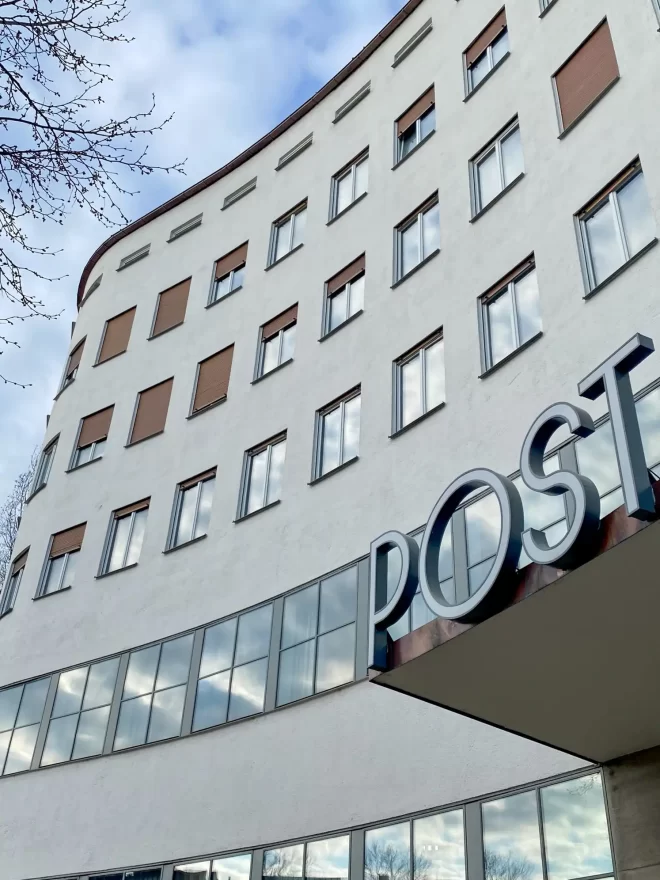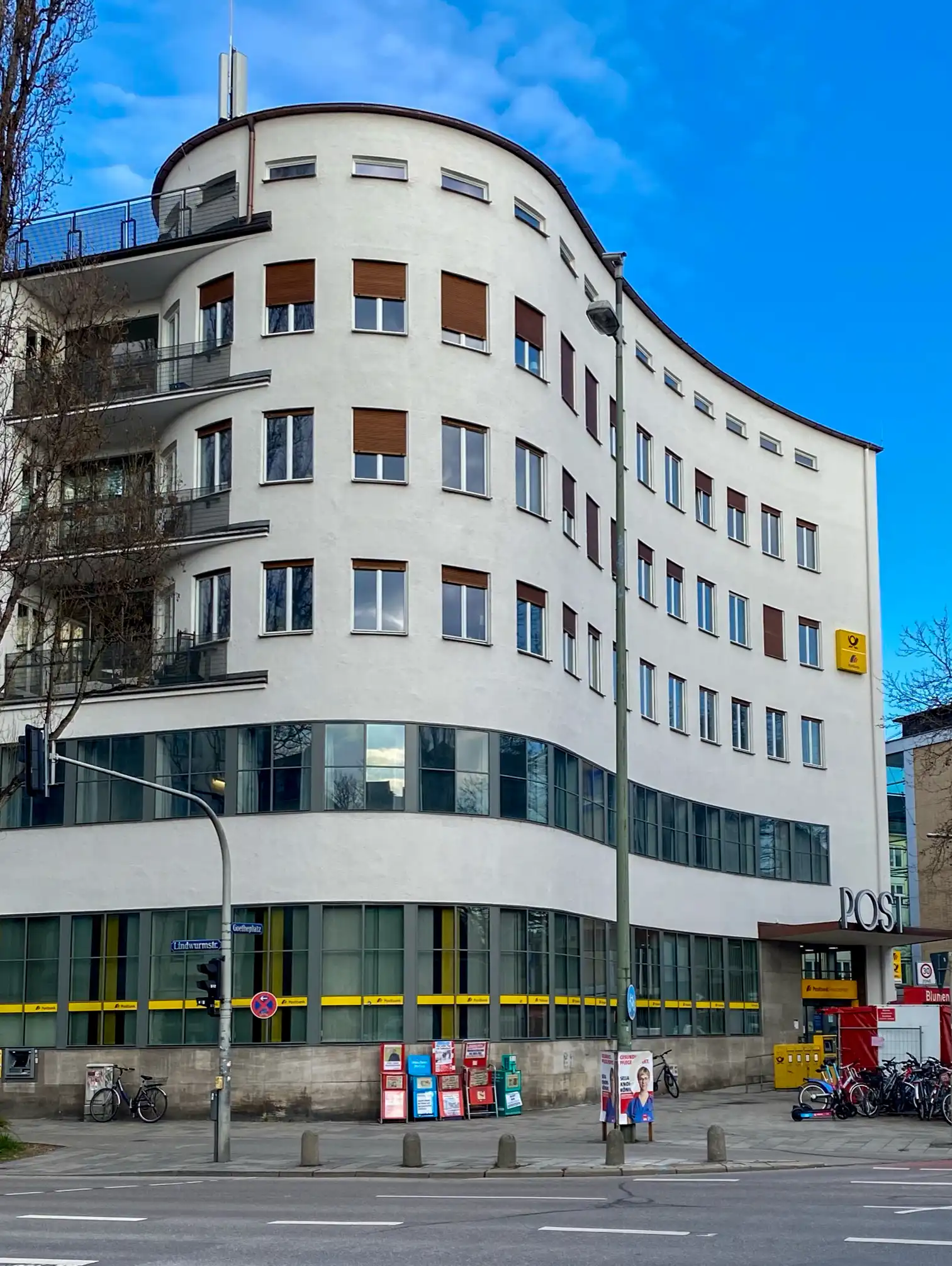
Postoffice Goetheplatz, 1931-1932. Architects: Franz Holzhammer, Walther Schmidt. Photo: Daniela Christmann
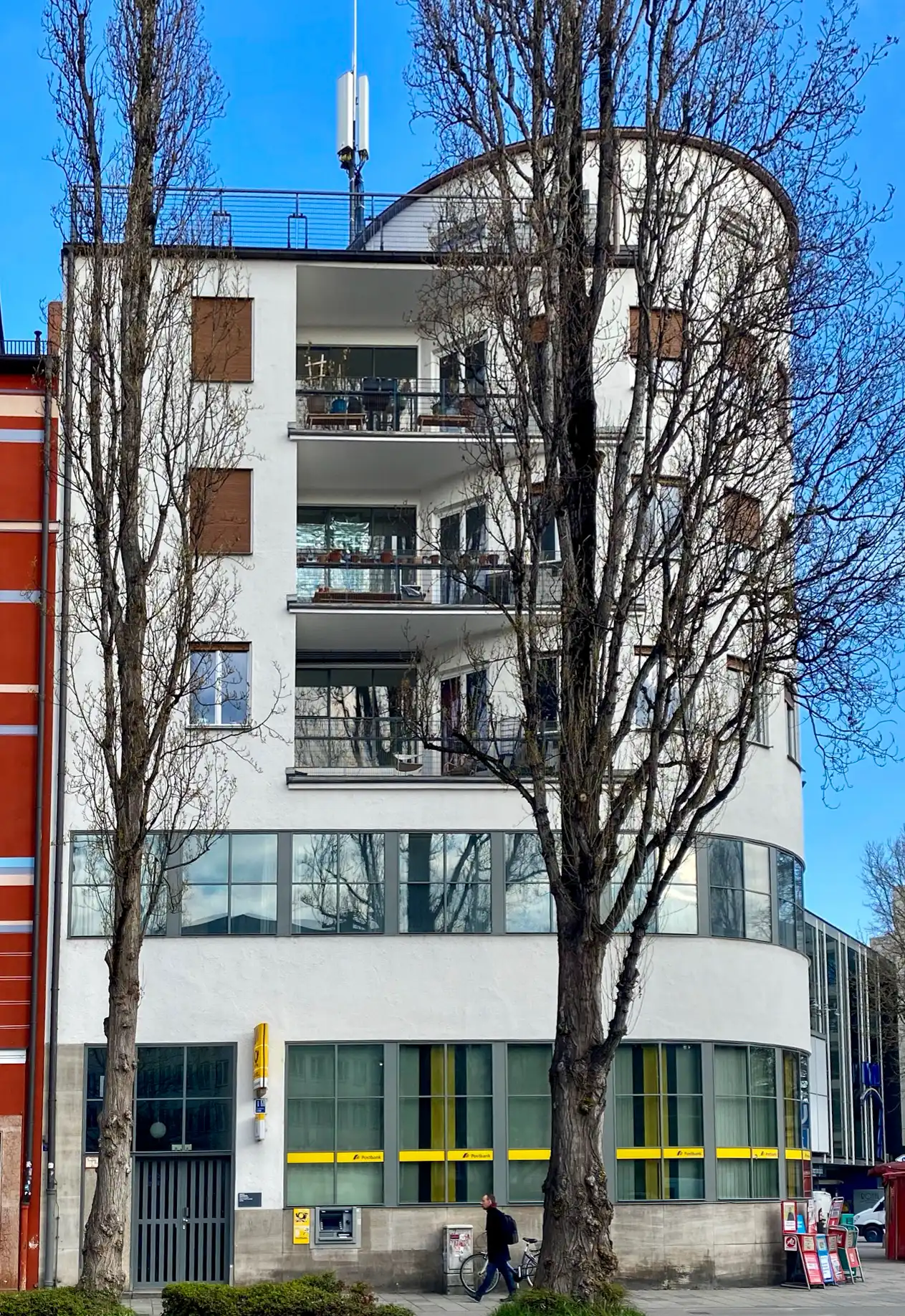
Postoffice Goetheplatz, 1931-1932. Architects: Franz Holzhammer, Walther Schmidt. Photo: Daniela Christmann
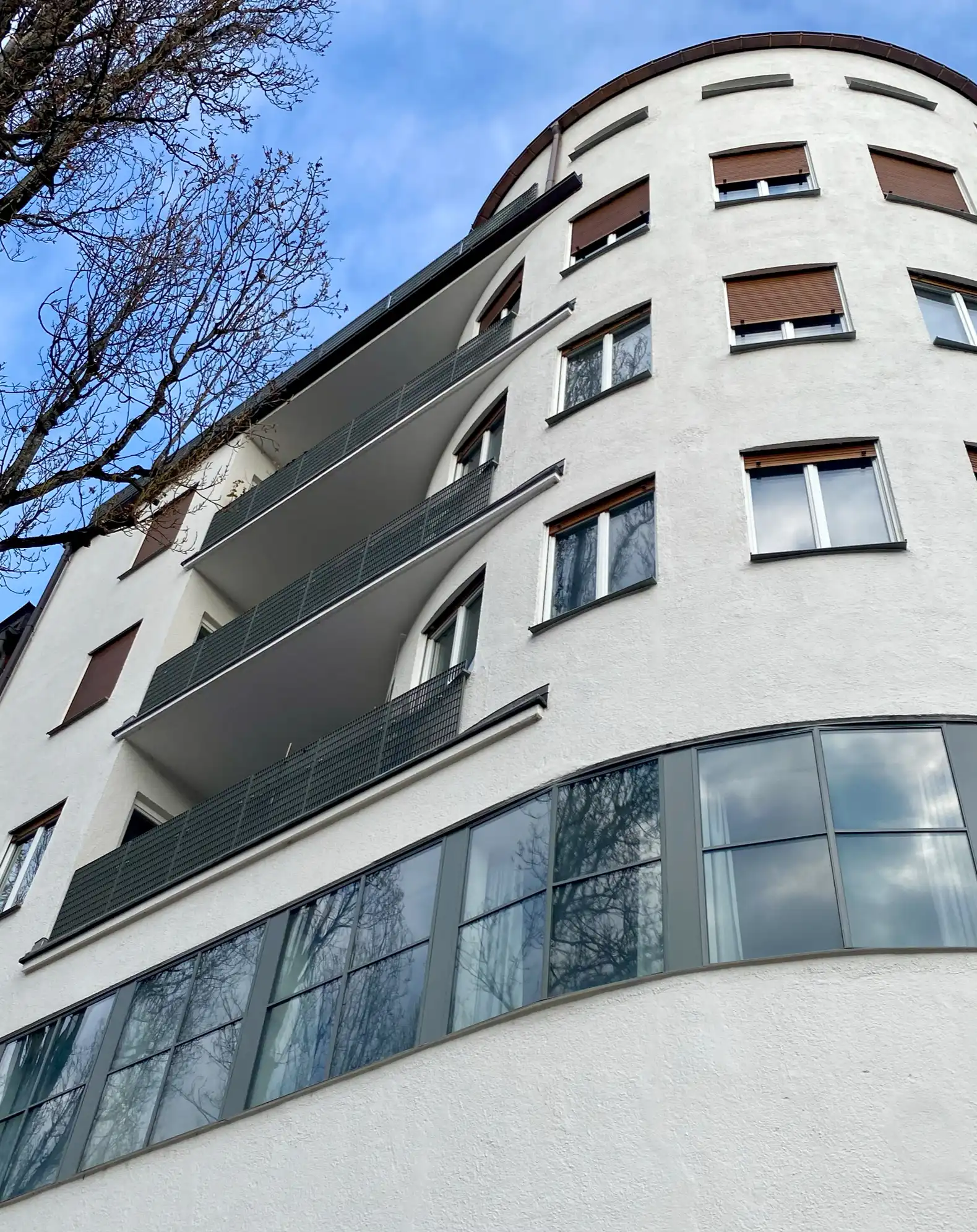
Postoffice Goetheplatz, 1931-1932. Architects: Franz Holzhammer, Walther Schmidt. Photo: Daniela Christmann
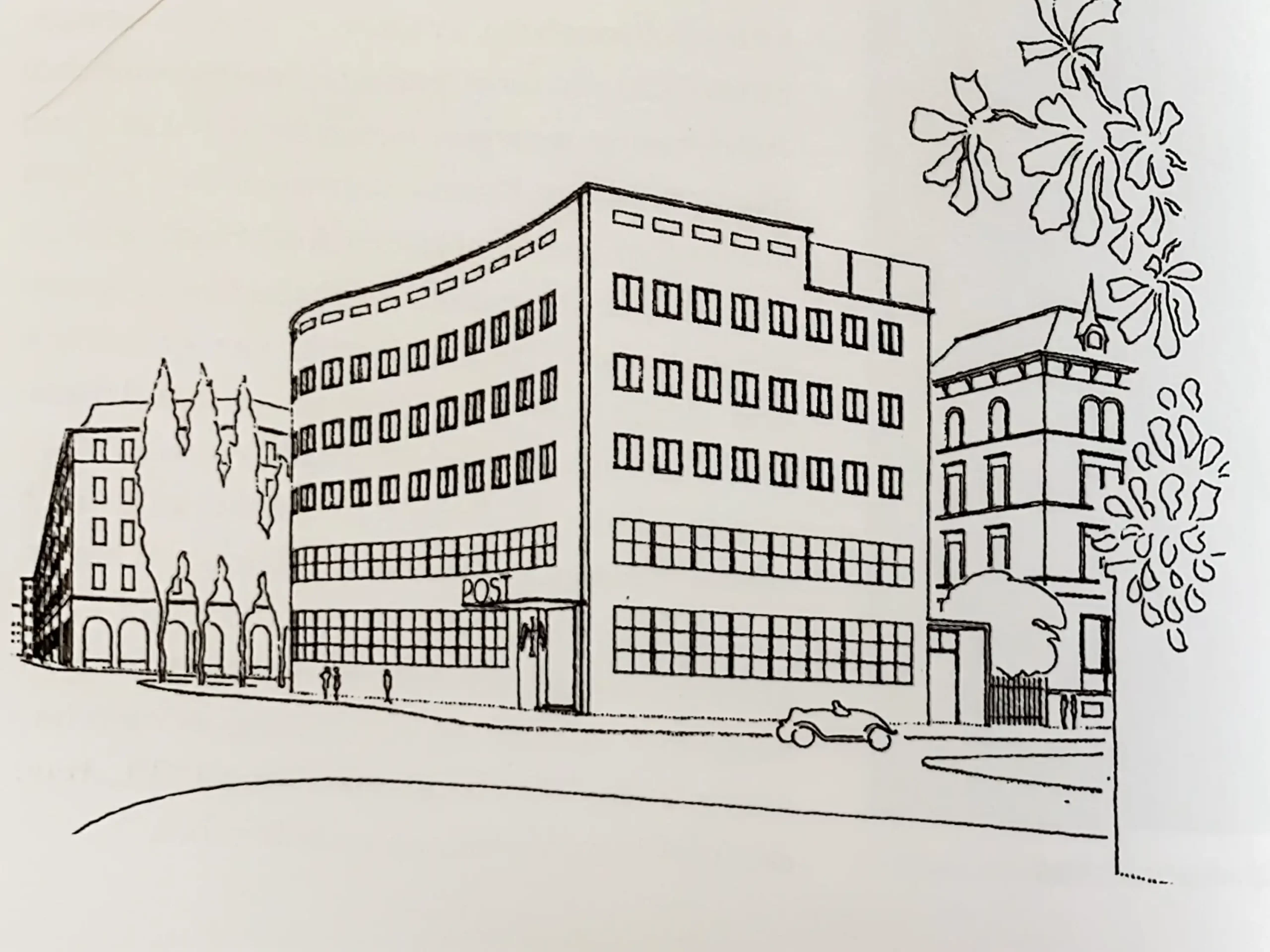
Postoffice Goetheplatz, 1931-1932. Architects: Franz Holzhammer, Walther Schmidt. Design sketch
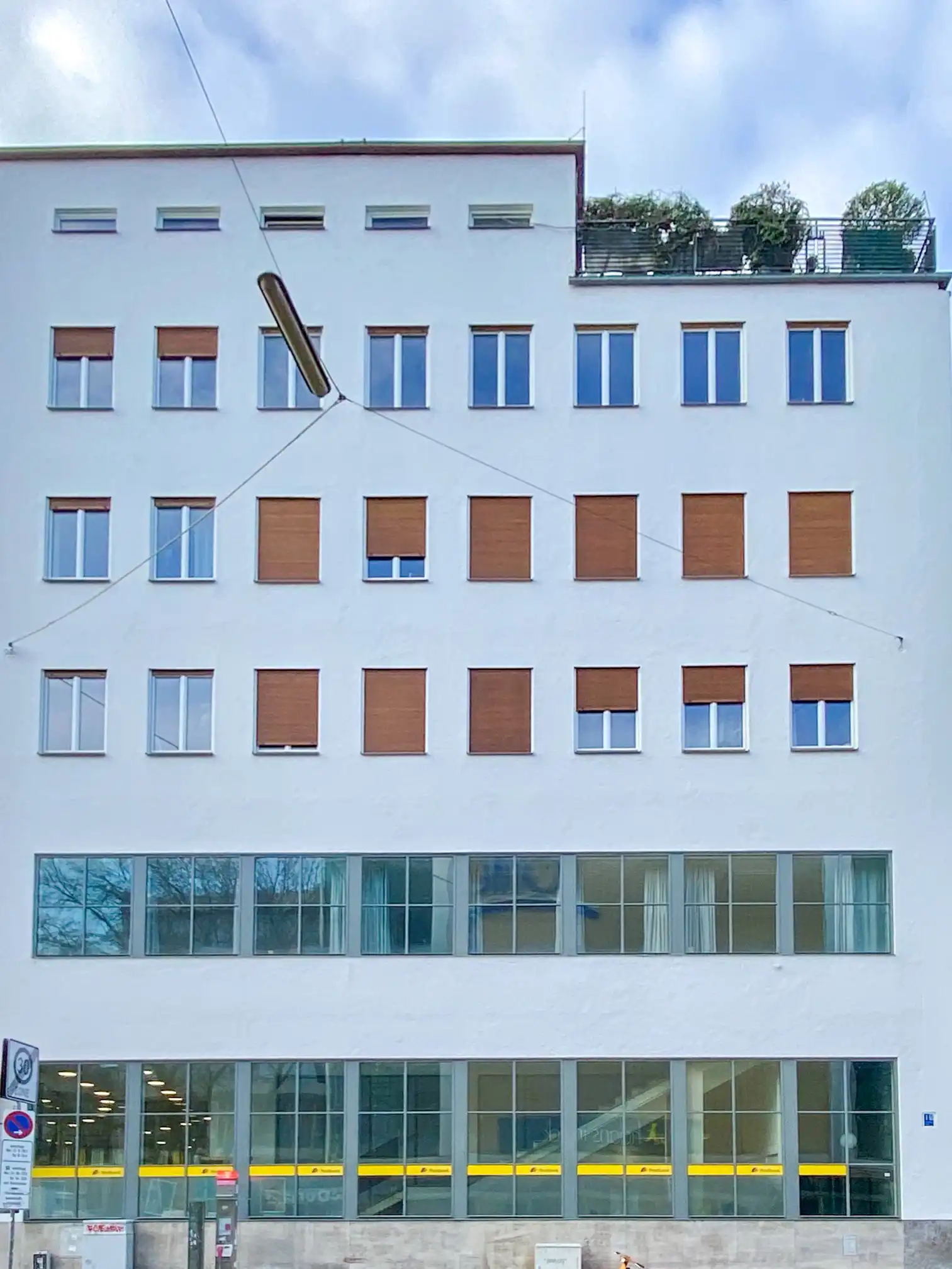
Postoffice Goetheplatz, 1931-1932. Architects: Franz Holzhammer, Walther Schmidt. Photo: Daniela Christmann
1931 – 1932
Architects: Franz Holzhammer, Walther Schmidt
Goetheplatz 1, Lindwurmstraße 6, Munich, Germany
The five-story post office building with a curved facade structured by an elongated window band and uniform rows of windows, as well as a glazed first floor, was built on Goetheplatz in Munich from 1931 to 1932 according to plans by architects Franz Holzhammer and Walther Schmidt.
Neue Sachlichkeit
The building, which was constructed in the style of Neue Sachlichkeit (New Objectivity) and Classical Modernism, has a reinforced concrete skeleton and is lined with pumice stone.
The construction site for the post office building on Goetheplatz was bounded by Lindwurmstrasse and Mozartstrasse and formed an acute-angled corner. Delivery and loading activities were carried out from the courtyard entrance in Mozartstraße.
Post Office and Apartments
The listed building contains both a post office on the ground floor and apartments on the upper floors.
At the time of construction, the parcel sorting department was located on the ground floor of the building, and the letter carrier’s room was located on the first floor.
Like the apartments above, both were accessed by a common staircase.
The rooms of the postal administration as well as additional apartments for postal employees were accessed via a staircase on Lindwurmstrasse, whose staircase between the first and second floors was shifted to the center of the building by a 90 degree turn.
Counter Hall
The counter hall on the ground floor was entered via a vestibule from Goetheplatz.
The vestibule housed the Silent Post Office with telephone booths, mailboxes, and post office boxes.
Light fell into the counter rooms from both sides, both from the curved glazed façade area and through a narrow band of windows from the courtyard side.
Apartements
The apartments on the upper floors were spacious with long hallways and plank floors. Kitchens and bathrooms faced the courtyard, while bedrooms and living rooms faced the street.
An attic with a janitor’s apartment, attic and drying loft, as well as a roof terrace for house residents and postal employees, formed the end of the building.
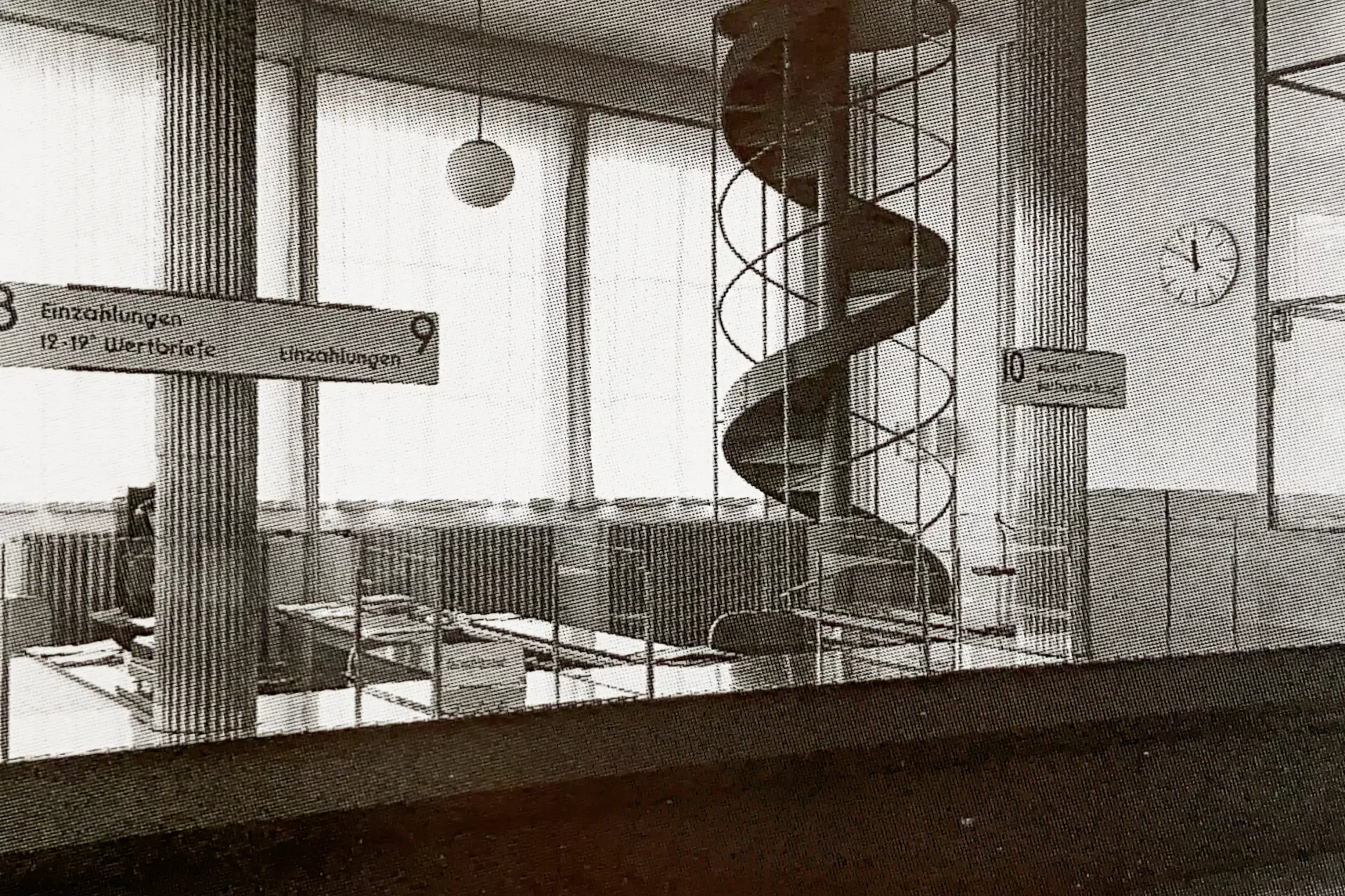
Postoffice Goetheplatz, 1931-1932. Architects: Franz Holzhammer, Walther Schmidt. Contemporary interior photo
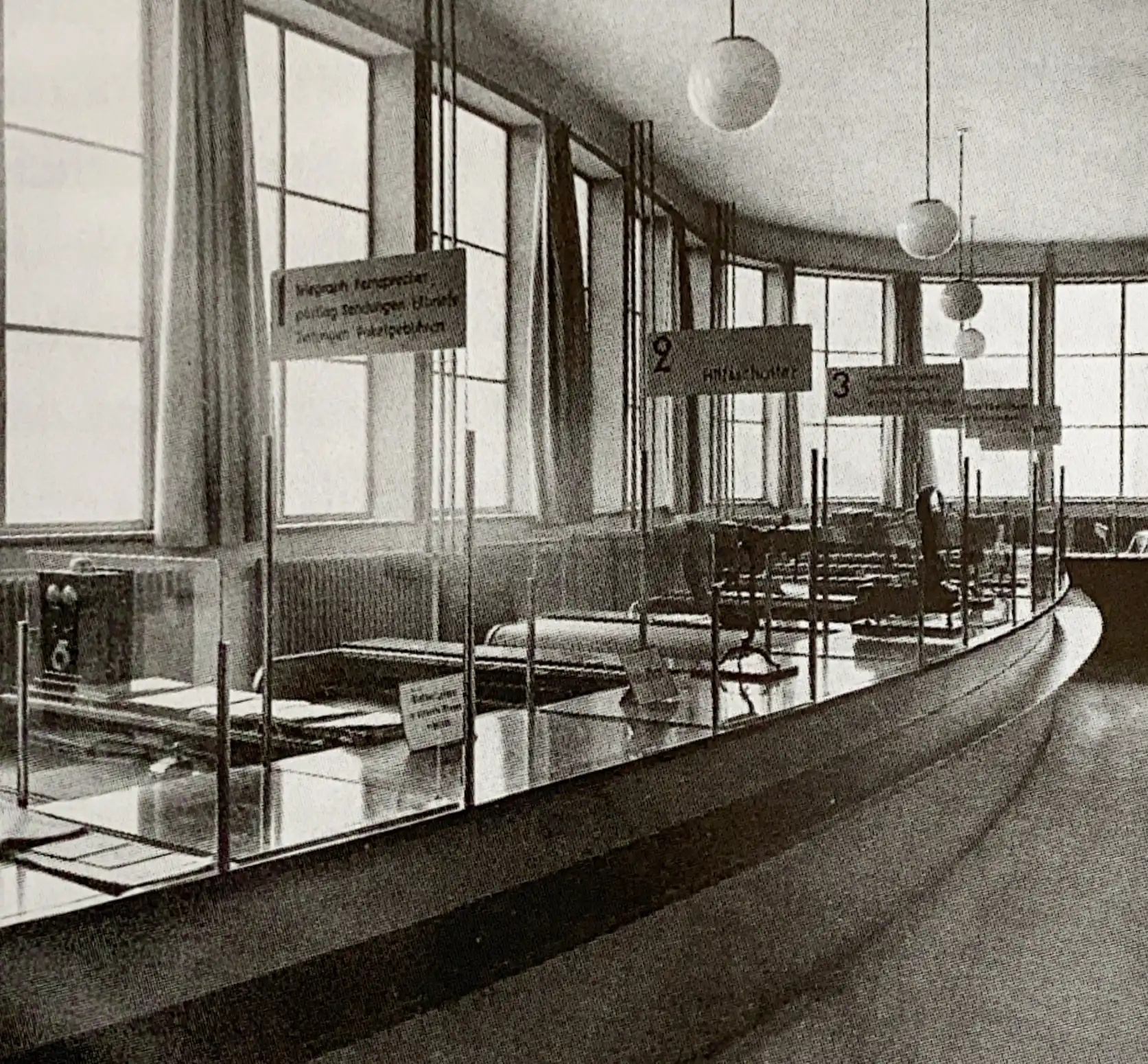
Postoffice Goetheplatz, 1931-1932. Architects: Franz Holzhammer, Walther Schmidt. Contemporary interior photo

